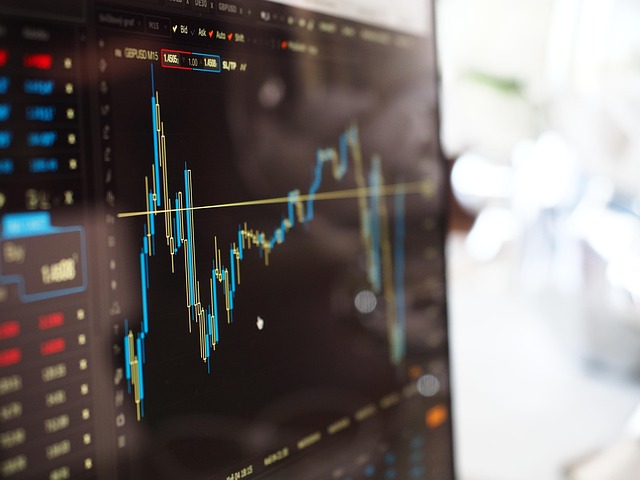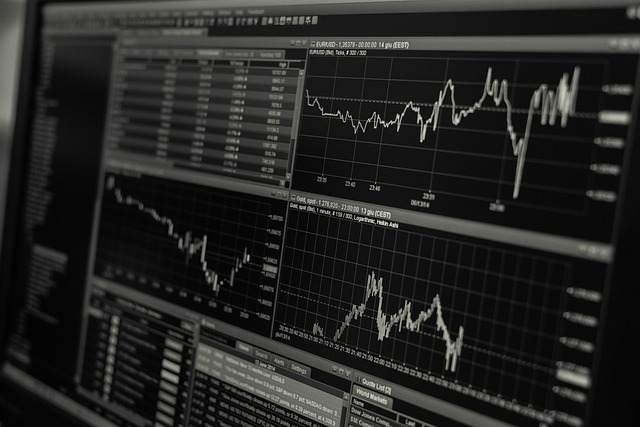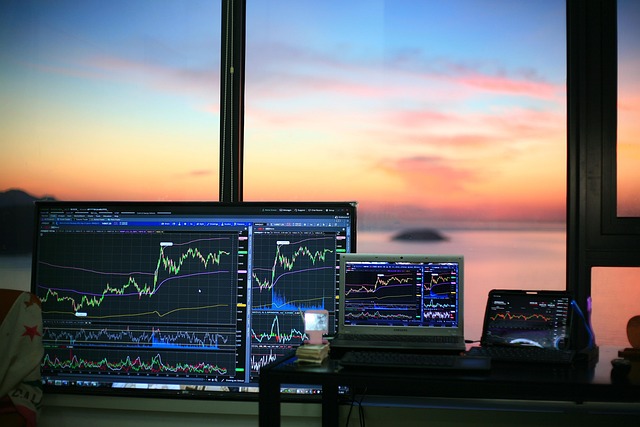Rare Earth Stocks for the US Government to Invest in? Why Critical Metals (CRML) Stock Is Soaring
Rare earth elements have become one of the most strategically important resources in the modern global economy. These 17 metallic elements are essential for manufacturing everything from smartphones and electric vehicles to advanced military equipment and renewable energy systems. As nations around the world race to secure their supply chains, understanding the rare earth market and investment opportunities has never been more critical for investors and policymakers alike.
Understanding the Basics

Rare earth elements, despite their name, are relatively abundant in the Earth’s crust. However, what makes them “rare” is their geological distribution and the complex, environmentally challenging extraction and processing required to produce them in commercially viable quantities. The rare earth group includes elements like neodymium, praseodymium, dysprosium, and terbium, each with unique magnetic, luminescent, and electrochemical properties that make them irreplaceable in modern technology.
The global rare earth market has been dominated by China for decades, controlling approximately 70-80% of worldwide production and over 90% of processing capacity. This monopolistic position has created significant geopolitical concerns, particularly for the United States and its allies. Recent supply chain disruptions and trade tensions have highlighted the vulnerability of depending on a single nation for these critical materials.
The US government has recognized this strategic weakness and is actively working to develop domestic rare earth mining and processing capabilities. This includes substantial funding through the Defense Production Act, the Infrastructure Investment and Jobs Act, and various Department of Defense initiatives. Companies like Critical Metals Corp (CRML) are positioned at the forefront of this national security-driven investment wave, exploring and developing rare earth deposits within the United States and allied nations.

The market dynamics for rare earths are particularly compelling right now. Demand is projected to increase by 400-600% over the next two decades, driven primarily by the clean energy transition and electric vehicle revolution. Each EV requires 2-3 times more rare earth elements than a conventional vehicle, while wind turbines use massive quantities of neodymium and dysprosium in their permanent magnets.
Key Methods
Step 1: Evaluating Rare Earth Mining Companies

When considering investments in rare earth stocks, the first critical step is conducting thorough due diligence on the company’s geological assets. Not all rare earth deposits are created equal. Investors should examine the total rare earth oxide (TREO) content, but more importantly, the specific composition of high-value heavy rare earth elements versus lower-value light rare earths. Companies with deposits rich in neodymium, praseodymium, dysprosium, and terbium command premium valuations because these elements drive the highest margins.
Critical Metals Corp (CRML) has attracted significant attention due to its Tanbreez project in Greenland, which hosts one of the world’s largest undeveloped rare earth resources. The project’s preliminary economic assessments show favorable economics and a resource profile weighted toward the most valuable elements. Additionally, investors should assess the stage of project development—early exploration, resource definition, pre-feasibility, feasibility, or production. Each stage carries different risk profiles and timelines to potential returns.
Beyond geology, examining the company’s management team is essential. Successful rare earth development requires expertise spanning geology, metallurgy, environmental permitting, and international trade relationships. Look for management teams with proven track records of bringing mining projects from discovery through production, particularly those with specific rare earth experience.

Financial health is equally important. Rare earth projects require substantial capital investment—often hundreds of millions of dollars—before generating revenue. Evaluate the company’s cash position, burn rate, and access to capital. Companies with strong balance sheets or strategic partnerships with major corporations or governments are better positioned to weather the long development timelines typical in mining.
Step 2: Understanding Government Support and Subsidies
The second crucial factor in evaluating rare earth investments is understanding the landscape of government support programs. The US government has designated rare earths as critical minerals and established multiple funding mechanisms to support domestic production. The Department of Defense has provided grants and offtake agreements to promising companies, while the Department of Energy supports research into more efficient processing technologies.

Investors should monitor which companies have secured government contracts or grants, as these provide validation of the project’s strategic importance and often include direct funding that reduces shareholder dilution. Critical Metals and similar companies benefit from this policy environment, though securing government support requires meeting strict criteria around environmental standards, domestic content, and timeline commitments.
The CHIPS and Science Act, Infrastructure Investment and Jobs Act, and Inflation Reduction Act all contain provisions that indirectly boost rare earth demand through subsidies for EV manufacturing, renewable energy deployment, and semiconductor production. Understanding how these policy frameworks create downstream demand helps investors identify which rare earth elements will see the strongest price appreciation.
Additionally, international partnerships matter significantly. Countries like Australia, Canada, and Greenland have substantial rare earth resources and are actively partnering with Western companies to develop alternative supply chains. Companies with projects in politically stable, allied jurisdictions face lower geopolitical risk than those dependent on adversarial nations or unstable regions.
Step 3: Analyzing Market Timing and Price Cycles
The current market environment shows several positive indicators for rare earth stocks. Prices for neodymium-praseodymium oxide have stabilized after previous volatility, while long-term demand projections continue strengthening. Global EV sales are growing at 30-40% annually, and major automakers have committed hundreds of billions to electrification, guaranteeing sustained rare earth demand growth.
However, investors should also watch for warning signs. Oversupply concerns could emerge if multiple major projects reach production simultaneously, or if China floods the market to maintain market share. Technological substitution risk exists, though current research suggests no viable alternatives for rare earths in most high-performance applications within the next 10-15 years.
Diversification within the rare earth sector can also mitigate timing risk. Rather than concentrating on a single company, investors might consider a portfolio approach including early-stage exploration companies like Critical Metals, mid-stage developers closer to production, and established producers generating cash flow. This strategy captures different points along the risk-return spectrum.
Practical Tips
**Tip 1: Monitor Chinese Export Policy Closely**
China’s rare earth export policies have historically been the single largest driver of price volatility and market sentiment. Stay informed about announcements from China’s Ministry of Commerce regarding export quotas, licensing requirements, or potential restrictions on specific elements. In 2010, China’s export restrictions caused rare earth prices to spike over 500%, creating enormous returns for investors positioned ahead of the move. Conversely, when China releases strategic reserves or increases export quotas, prices can decline sharply. Following specialized industry publications, attending rare earth conferences, and subscribing to market intelligence services provides early warning of policy shifts. Understanding China’s strategic objectives—balancing domestic industrial needs against foreign currency earnings and geopolitical leverage—helps predict likely policy directions.
**Tip 2: Assess Environmental and Permitting Risks**
**Tip 3: Understand Downstream Integration Opportunities**
The greatest value capture in rare earth supply chains occurs not in mining, but in separation, refining, and magnet manufacturing. Companies that can vertically integrate into these higher-margin segments create much stronger competitive moats and better long-term returns. Examine whether rare earth mining companies have partnerships with downstream processors or plans to develop their own separation facilities. Critical Metals and other developers are exploring integration strategies that could multiply project valuations. Investors should favor companies with realistic pathways to downstream value capture rather than those planning to sell mixed rare earth concentrates at commodity prices.
**Tip 4: Calculate Realistic Production Timelines**
One of the most common mistakes in rare earth investing is underestimating the time required to bring projects online. From discovery to production typically requires 10-15 years, including geological assessment, environmental permitting, feasibility studies, financing, construction, and commissioning. Many promotional companies create unrealistic expectations about production timelines to maintain investor interest and stock prices. Conduct independent research on comparable projects to establish realistic benchmarks. Projects in advanced stages with major milestones already achieved—completed feasibility studies, permits in hand, financing secured—deserve higher valuations than early-stage exploration plays despite potentially lower percentage returns.
**Tip 5: Diversify Beyond Pure-Play Rare Earth Stocks**
While focused rare earth developers like Critical Metals offer pure exposure to the sector, diversification into related areas can optimize risk-adjusted returns. Consider positions in established diversified mining companies with rare earth divisions, technology companies developing more efficient extraction methods, or manufacturers of rare earth magnets and components. Exchange-traded funds (ETFs) focused on critical minerals provide instant diversification, though with less upside potential than individual stock selection. Additionally, some investors gain rare earth exposure through renewable energy and EV stocks that will benefit from secure rare earth supply chains, creating a hedge against sector-specific risks while capturing the broader electrification trend.
Important Considerations
Before investing in rare earth stocks, investors must understand several critical risk factors that differentiate this sector from traditional equity investments. First, technological risk looms large—while current applications seem irreplaceable, substantial research efforts are ongoing to develop rare earth-free alternatives, particularly in magnet technologies. Any breakthrough could devastate demand for specific elements overnight. Stay informed about research developments in universities and corporate laboratories.
Second, capital intensity creates substantial dilution risk. Rare earth projects require hundreds of millions in capital expenditure, which junior miners typically raise through equity offerings that dilute existing shareholders. Companies with weak negotiating positions may be forced to issue shares at depressed prices during market downturns, destroying long-term value. Examine historical patterns of share issuance and management’s capital allocation track record.
Third, operational complexity in rare earth processing means many projects that look promising on paper fail during pilot testing or commercial production. The chemistry of separating rare earth elements is extraordinarily complex, with each deposit requiring customized processing flowsheets. Companies without experienced metallurgical teams or adequate pilot plant testing face high probabilities of cost overruns and production delays.
Finally, geopolitical risk cuts both ways in rare earth investing. While US-China tensions create opportunities for Western rare earth developers, escalating conflict could also trigger market chaos, supply disruptions, or even asset seizures. Investors should maintain appropriate position sizing and avoid over-concentration in this volatile sector.
Conclusion
The rare earth sector stands at a pivotal moment, with converging forces of technology transformation, geopolitical restructuring, and environmental imperatives creating unprecedented investment opportunities. Companies like Critical Metals Corp (CRML) that are developing strategic assets in allied jurisdictions are positioned to benefit from sustained government support and growing private sector demand. The stock’s recent performance reflects market recognition of these favorable dynamics and the company’s specific project strengths.
However, success in rare earth investing requires patience, thorough research, and realistic expectations about timelines and risks. This is not a sector for speculative trading or get-rich-quick schemes, but rather a long-term strategic play on fundamental shifts in global supply chains and technology infrastructure. Investors who approach rare earth stocks with disciplined analysis, appropriate diversification, and understanding of the complex technical and political factors at play can potentially achieve substantial returns while supporting critical national security objectives.
The transition to clean energy and electric transportation is irreversible, guaranteeing decades of growing rare earth demand. The question is not whether rare earths will be essential to our future, but which companies will successfully develop the resources to supply this demand. By following the methods and tips outlined above, investors can position themselves to identify tomorrow’s rare earth leaders while managing the inherent risks of this dynamic sector. Whether you’re a retail investor exploring new opportunities or an institutional allocator seeking exposure to critical materials, the rare earth sector deserves serious consideration in a well-balanced, forward-looking portfolio.
